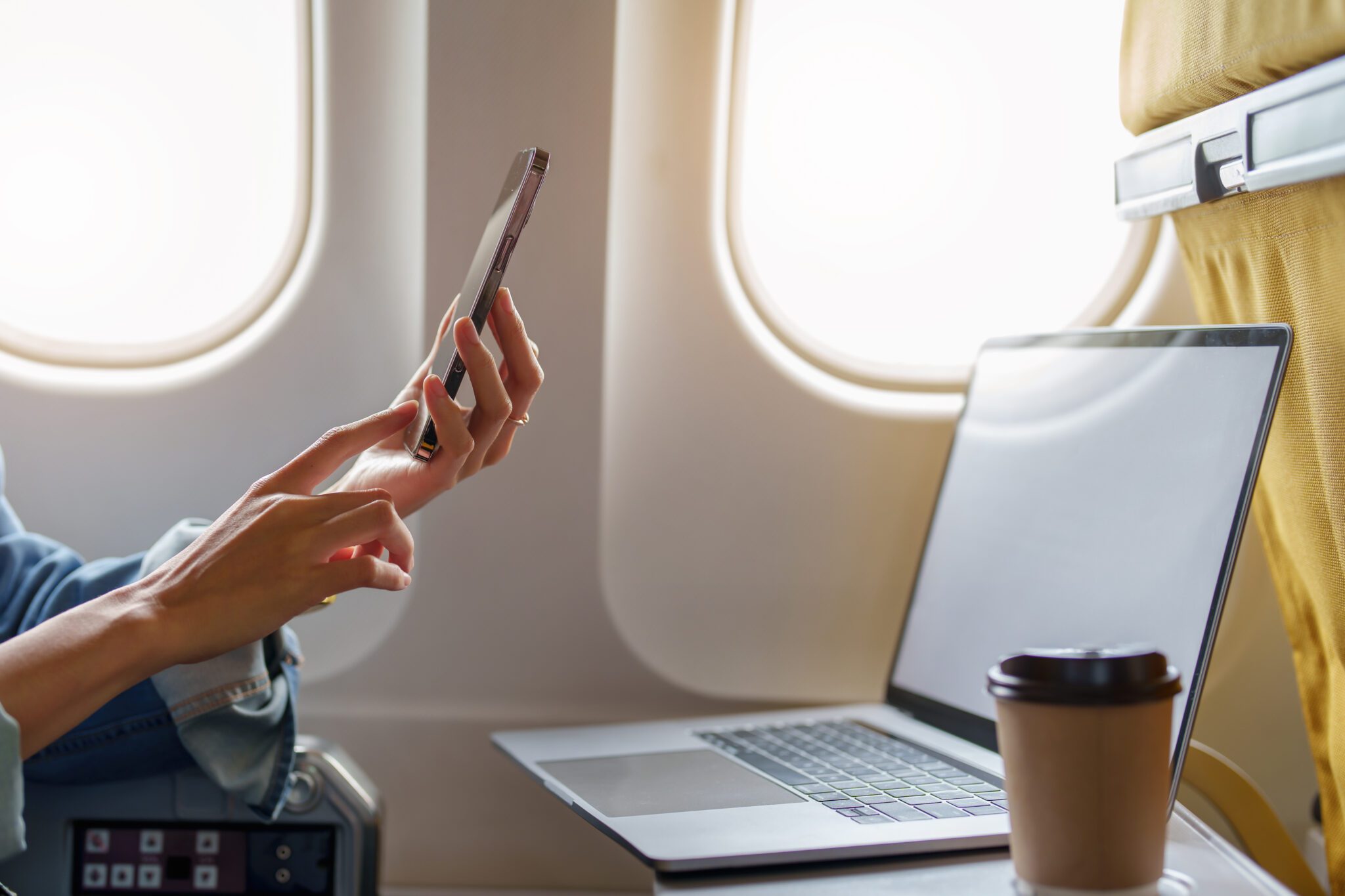Skift Take
In-flight internet connectivity is ready for its next phase, with Starlink going live with its satellite solution in 2023 and lining up airline contracts.
In-flight internet connectivity has come a long way since 2003, when Connexion by Boeing launched and Lufthansa and British Airways became the first airlines to test it out. Airlines depended on ground stations that would relay signals when flying over land, switching to satellite connectivity when flying oceanic. It was slow.
But over the past 20 years, in-flight internet service has been one of the fastest changing aspects of passenger experience. Now, we have a real possibility of getting blazing-fast internet on board.
Enter Starlink Aviation
SpaceX started to launch Starlink satellites in 2019 and now has over 5,500 Low Earth Orbit (LEO) satellites and an ability to bring online any part of the Earth that has an unobstructed line of sight to the sky.
In October 2022, SpaceX rolled out Starlink products that could provide satellite internet connectivity to aircraft and branded them Starlink Aviation.
At the time, SpaceX advertised global internet coverage, which would be possible by installing a small antenna atop the aircraft. It said that passengers could expect speeds of up to 350 megabits per second, making video streaming possible on board.
Starlink’s website lists a monthly price of $25,000 to provide the service and an additional $150,000 for the hardware per aircraft.
JSX, which operates over 40 Embraer Regional Jet aircraft in the United States with only 30 passenger seats, became the first airline to roll out connectivity using the Starlink Ku-band Low Earth Orbit connectivity solution in late 2022.
Installing Starlink allows for connectivity from gate to gate, allowing passengers to stay connected for longer – unlike more conventional solutions, which require the aircraft to climb to 10,000 feet to enable a connection.
In March 2023, JSX conducted a demonstration flight, where the attendees could usually get 100mbps download speeds. On the back of the high-speed connection, the airline could also offer video telephony and Voice over IP telephony, which the mainline carriers usually do not offer onboard aircraft. JSX has completed the implementation on its aircraft and currently offers it free to passengers.
Starlink Aviation Goes Mainstream With Larger Airlines
Starlink Aviation has had many wins since then.
In 2022, Hawaiian Airlines became the first major airline to announce an agreement with Starlink. The airline intends to equip its Airbus A330 and A321neo aircraft and a fleet of incoming Boeing 787-9 aircraft with Starlink’s inflight connectivity from 2024 onwards.
The airline will offer complimentary high-speed internet between the islands and continental U.S., Asia and Oceania.
Latvian carrier airBaltic signed up in January to install Starlink across its A220-300 fleet, becoming the first European carrier to commit to it, with service now expected in 2024 after a brief delay due to the lack of certification by aviation regulators.
This was followed by Zipair Tokyo, an all 787-8 low-cost operator that operates flights between Tokyo Narita, Southeast Asia and the U.S.. It is still waiting for a required certificate from regulators, expected in “2024 & Beyond,” according to Starlink.
Qatar Airways became the largest carrier to sign up for the Starlink solution in late 2023. Qatar Airways currently uses Inmarsat to provide its Super Wi-Fi service, which powers connectivity on the airline’s 777, 787-9 and A350 jets, and SITA OnAir for the A380 and 787-8 aircraft. However, neither the airline nor Starlink provided a timeline for when the connectivity would go live. Starlink is currently only working on the required Supplemental Type Certificate for the Boeing 787 and 777 aircraft and not for the A350/A380 aircraft, which are a large part of the fleet for Qatar Airways.
In what could be the last announcement for Starlink in 2023, it signed Air New Zealand to trial free internet onboard their domestic aircraft. Air New Zealand will install Starlink on its ATR turbo-propellor aircraft in late 2024 and a domestic jet (an A320). Air New Zealand hasn’t yet committed to a deal and said it would look to roll out Starlink internet on other aircraft in its fleet in 2025 after the trial.
Starlink Is Competing With OneWeb
According to The Future of In-Flight Connectivity – 2023 report, published by Valour Consultancy of UK, more than 22,000 aircraft are expected to have in-flight connectivity by 2032. As of 2022, only 10,000 aircraft had in-flight connectivity solutions installed. So, there is a large chunk of the market up for grabs.
However, Starlink is not the only player in the LEO satellite internet space. As reported by Runway Girl Network, OneWeb has also entered the space, planning to launch its LEO service in 2024. OneWeb and its distribution partner Intelsat will provide Alaska Airlines’ feeder services Horizon Air and SkyWest with satellite internet connectivity starting in 2024.
OneWeb will not directly deal with airline customers; it will provide the bandwidth to established service providers such as Intelsat, who will further power the airline connectivity solutions. It will be interesting to see which approach wins the market in the coming years, with Starlink going directly to the airlines.
The Daily Newsletter
Our daily coverage of the global travel industry. Written by editors and analysts from across Skift’s brands.
Have a confidential tip for Skift? Get in touch
Tags: business travel, connectivity, inflight internet, qatar airways, starlink
Photo credit: Travelers might be able to benefit from faster Internet connections while flying. Jirapong Manustrong / Getty Images
